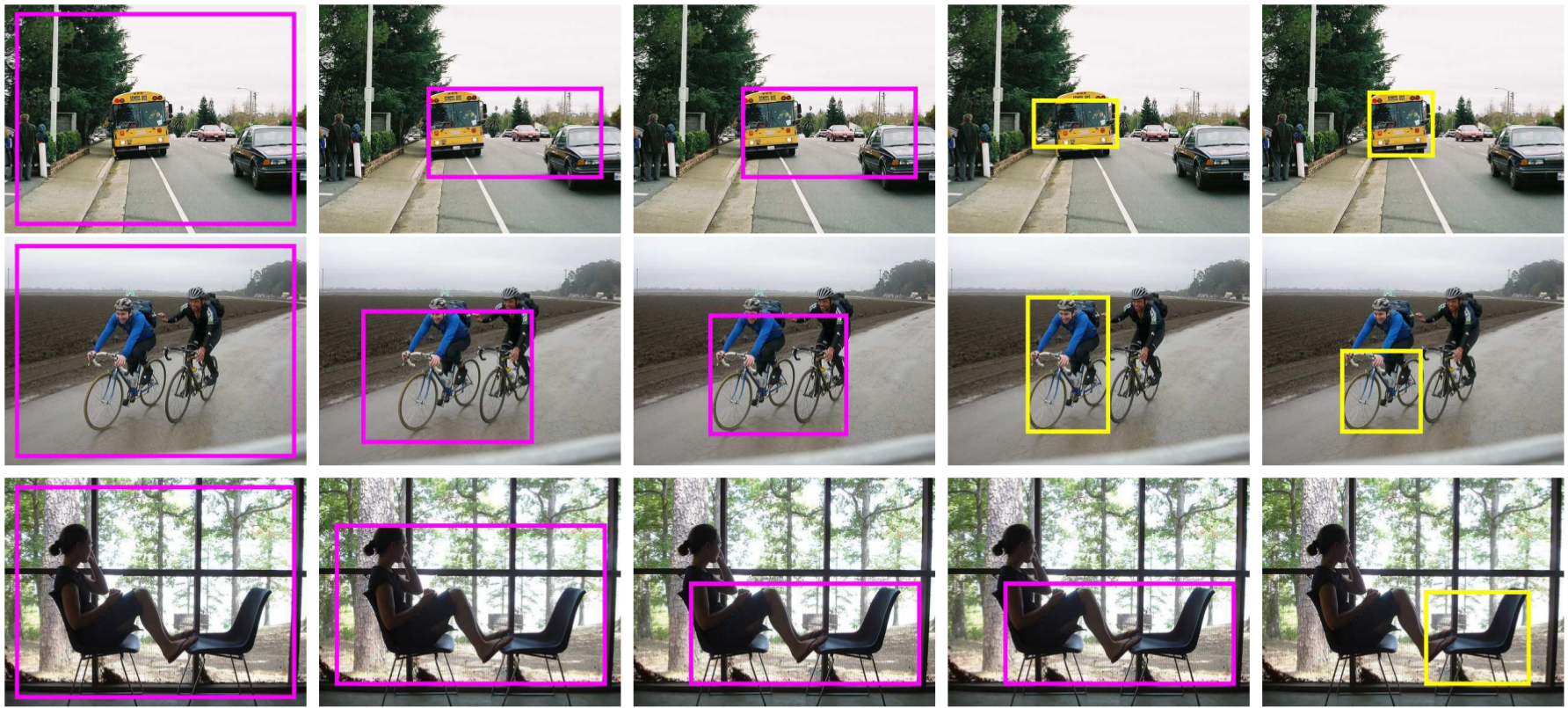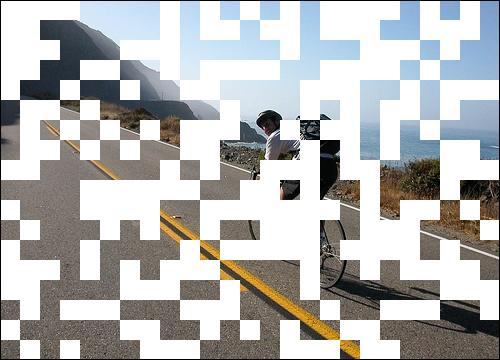Section: New Results
Visual recognition in images
Weakly Supervised Object Localization with Multi-fold Multiple Instance Learning
Participants : Ramazan Cinbis, Cordelia Schmid, Jakob Verbeek.
Object category localization is a challenging problem in computer vision. Standard supervised training requires bounding box annotations of object instances. This time-consuming annotation process is sidestepped in weakly supervised learning. In this case, the supervised information is restricted to binary labels that indicate the absence/presence of object instances in the image, without their locations. In [26] , we propose to follow a multiple-instance learning approach that iteratively trains the detector and infers the object locations in the positive training images. Our main contribution is a multi-fold multiple instance learning procedure, which prevents training from prematurely locking onto erroneous object locations. Compared to state-of-the-art weakly supervised detectors, our approach better localizes objects in the training images, which translates into improved detection performance. Figure 1 illustrates the iterative object localization process on several example images. The technical report [26] is a journal paper under review after minor revision which extends a previous conference publication by adding experiments with CNN features, and a refinement procedure for the object location inference. These additions improve over related work that has appeared since the publication of the original paper.
|
Patch-level spatial layout for classification and weakly supervised localization
Participants : Valentina Zadrija [University of Zagreb] , Josip Krapac [University of Zagreb] , Jakob Verbeek, Sinisa Segvic [University of Zagreb] .
In [24] we propose a discriminative patch-level spatial layout model suitable for learning object localization models with weak supervision. We start from a block-sparse model of patch appearance based on the normalized Fisher vector representation. The appearance model is responsible for i) selecting a discriminative subset of visual words, and ii) identifying distinctive patches assigned to the selected subset. These patches are further filtered by a sparse spatial model operating on a novel representation of pairwise patch layout. We have evaluated the proposed pipeline in image classification and weakly supervised localization experiments on a public traffic sign dataset. The results show significant advantage of the proposed spatial model over state of the art appearance models.
Approximate Fisher Kernels of non-iid Image Models for Image Categorization
Participants : Ramazan Cinbis, Cordelia Schmid, Jakob Verbeek.
The bag-of-words (BoW) model treats images as sets of local descriptors and represents them by visual word histograms. The Fisher vector (FV) representation extends BoW, by considering the first and second order statistics of local descriptors. In both representations local descriptors are assumed to be identically and independently distributed (iid), which is a poor assumption from a modeling perspective. It has been experimentally observed that the performance of BoW and FV representations can be improved by employing discounting transformations such as power normalization. In [5] , an expanded version of a previous conference publication, we introduce non-iid models by treating the model parameters as latent variables which are integrated out, rendering all local regions dependent. Using the Fisher kernel principle we encode an image by the gradient of the data log-likelihood w.r.t. the model hyper-parameters. Our models naturally generate discounting effects in the representations; suggesting that such transformations have proven successful because they closely correspond to the representations obtained for non-iid models. To enable tractable computation, we rely on variational free-energy bounds to learn the hyper-parameters and to compute approximate Fisher kernels. Our experimental evaluation results validate that our models lead to performance improvements comparable to using power normalization, as employed in state-of-the-art feature aggregation methods.
|
Local Convolutional Features with Unsupervised Training for Image Retrieval
Participants : Mattis Paulin, Matthijs Douze, Zaid Harchaoui, Julien Mairal, Florent Perronnin [Facebook] , Cordelia Schmid.
Patch-level descriptors underlie several important computer vision tasks, such as stereo-matching or content-based image retrieval. We introduce a deep convolutional architecture that yields patch-level descriptors, as an alternative to the popular SIFT descriptor for image retrieval. The proposed family of descriptors, called Patch-CKN[17] , adapt the recently introduced Convolutional Kernel Network (CKN), an unsupervised framework to learn convolutional architectures. We present a comparison framework to benchmark current deep convolutional approaches along with Patch-CKN for both patch and image retrieval (see Fig. 3 for our pipeline), including our novel “RomePatches” dataset. Patch-CKN descriptors yield competitive results compared to supervised CNNs alternatives on patch and image retrieval.




